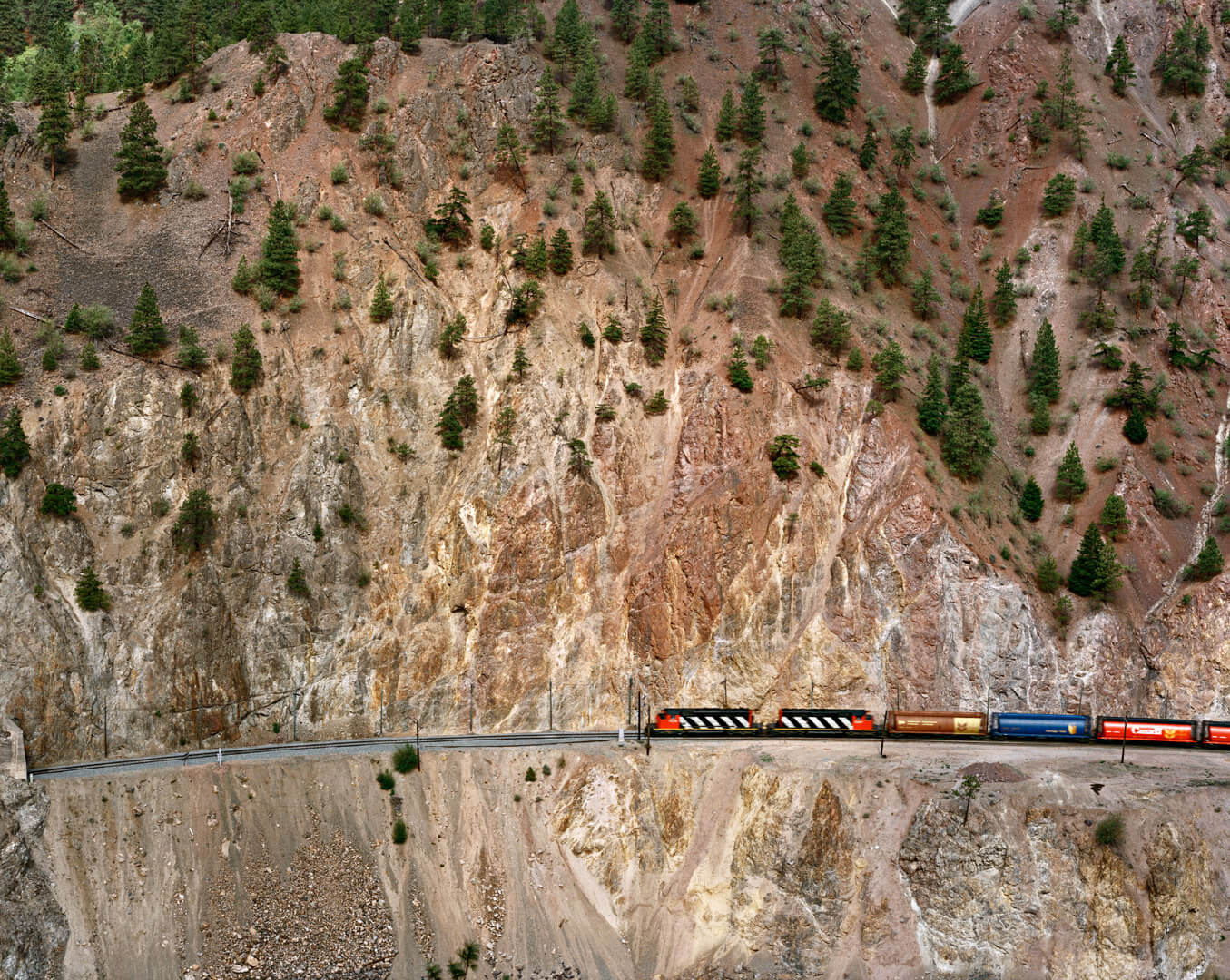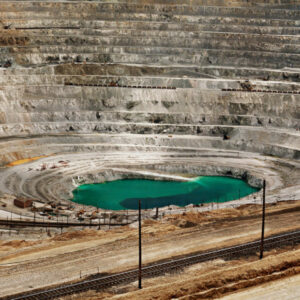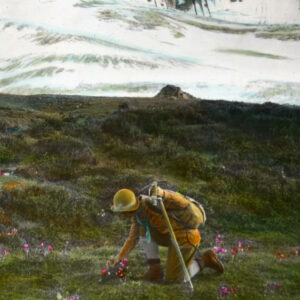Edward Burtynsky (b.1955, St. Catharines, Ontario)

Railcuts #8 (Red hill, C.N. train) C.N. Track, Thompson River, British Columbia, 1985
Chromogenic print, 48.3 x 59.7 cm
With Railcuts #8 (Red hill, C.N. Train) C.N. Track, Thompson River, British Columbia, Edward Burtynsky (b.1955) reveals how railways—a conspicuous symbol of industrialization and Canadian nation-building—have disturbed the land. Although tiny, the bright blue and red rail cars draw the eye to a track cut into the mountainous terrain and engage viewers through the disorienting scale. Burtynsky is known for his sustained investigation into the human-altered landscape, and his work is characterized by the way it shines a light on environmental concerns while simultaneously making human intrusions sublimely beautiful.
Born in St. Catharines and based in Toronto, Burtynsky is the founder and director of the successful commercial photo lab Toronto Image Works. In his early work from the late 1970s and early 1980s, Burtynsky was interested in intersections between painting and photography, and his dense compositions in photographs like Grasses, Bruce Peninsula, Ontario, Canada, 1981, reference the visual rhythms of abstract expressionism.
-
Edward Burtynsky, Homesteads #32, West of Merritt, British Columbia, 1985
Chromogenic print, 45.6 x 55.7 cm
-
Edward Burtynsky, Inco, Abandoned Mine Shaft, Crean Hill Mine, Sudbury, Ontario, 1984
Printed 1992, dye-coupler print (Ektacolor), 76.1 x 101.4 cm; image: 68.1 x 86.5 cm
National Gallery of Canada, Ottawa
In the series Homesteads, Burtynsky began to explore human interactions with the land by portraying aerial views of rural settings, such as in Homesteads #32, West of Merritt, British Columbia, 1985. His work responds to nineteenth-century Romanticism and its evocation of the sublime, but instead of emphasizing the grandeur of nature, he draws attention to the impact humans have had on the environment.
Whereas other North American photographers, such as Robert Adams (b.1937) and Lewis Baltz (1945–2014), adopted a detached approach to landscape as they reflected on the impact of industrial culture in their photographs, Burtynsky emphasizes aesthetics and provokes viewers with striking scenes of damaged landscapes. In the mid-1980s, he photographed abandoned mines, producing large-scale, richly coloured, and highly detailed images, as in Inco, Abandoned Mine Shaft, Crean Hill Mine, Sudbury, Ontario, 1984.
During his investigation of the Anthropocene era over the past several decades, Burtynsky has continued to produce visually compelling scenes of an environment ravaged by the harmful practices of industrial culture, including mine tailings, marble quarries, and oil fields, among others. Burtynsky has earned international acclaim and is the recipient of numerous awards, including the Governor General’s Award in Visual and Media Arts.

 About the Authors
About the Authors
 More Online Art Books
More Online Art Books
 Acknowledgements
Acknowledgements